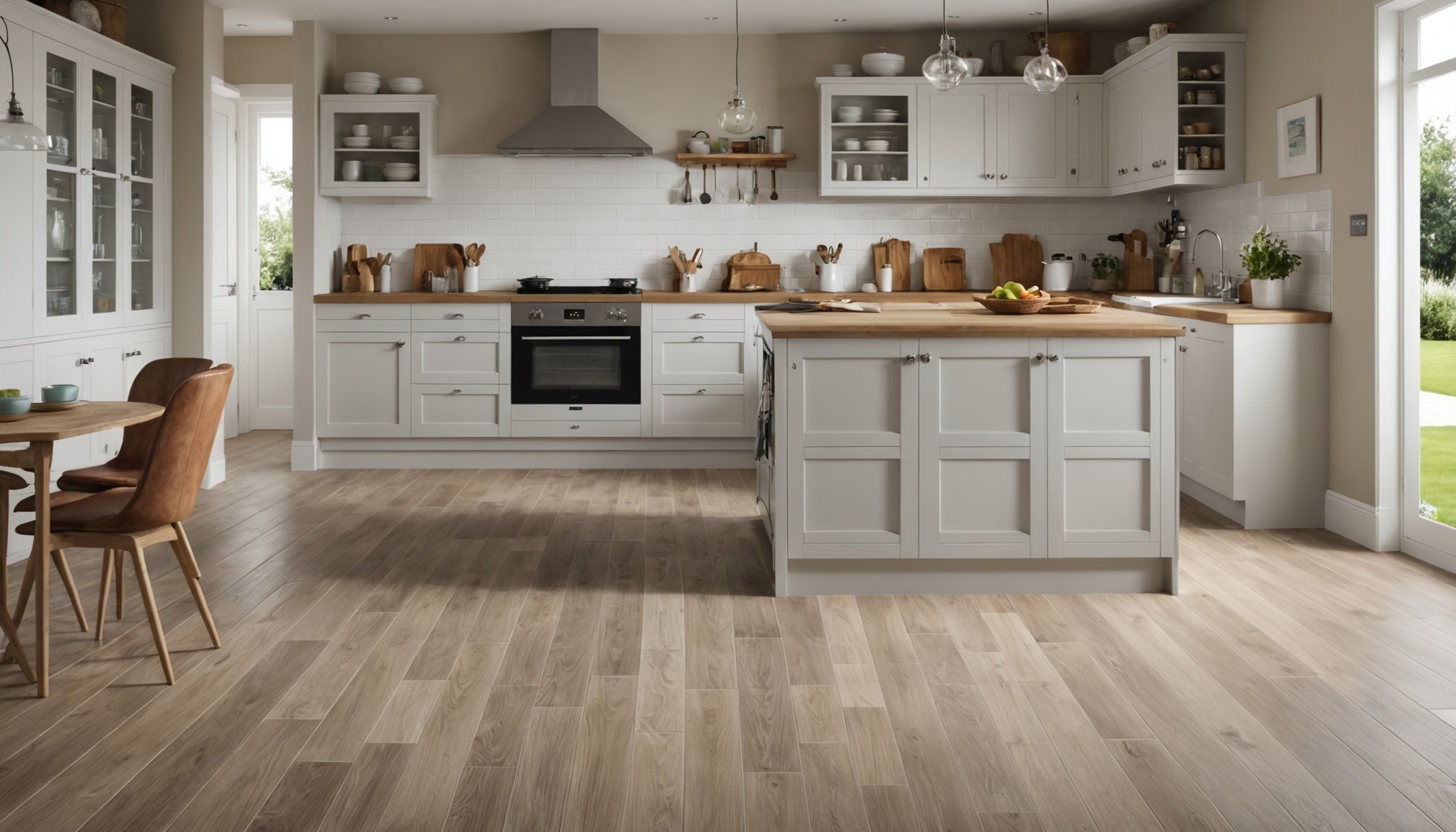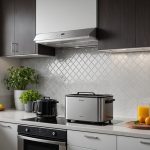Understanding Coastal Climate Impacts on Flooring Selection
In regions with a coastal climate, the unique meteorological characteristics significantly influence flooring selection decisions. UK’s coastal areas are particularly known for their wet and humid conditions, which demand floor materials capable of enduring high levels of moisture resistance. Such climates bring frequent exposure to salt-laden air and water, which can accelerate wear and tear on subpar flooring choices.
Selecting flooring for coastal locales necessitates understanding the impact of salt exposure. Salt can deteriorate certain materials, often leading to unsightly surface mildews and impaired structural integrity over time. Thus, materials that ensure high moisture resistance and are less reactive to salt are preferred.
Topic to read : Ultimate guide to selecting the ideal uk kitchen tap: effective strategies for reducing water waste
Currently, emerging trends highlight durable flooring solutions that withstand both moisture and salt corrosion. Some popular options include luxury vinyl tiles, engineered hardwoods, and ceramic tiles. Each offers distinct advantages, particularly in moisture-rich environments. For instance:
- Luxury vinyl tiles: Impressive moisture resistance and aesthetics.
- Engineered hardwoods: Resilience and warmth.
- Ceramic tiles: Robustness and longevity.
To extend the life of flooring in coastal climates, choosing materials wisely and understanding the interplay of environmental factors is paramount.
Topic to read : Illuminate your stylish modern uk kitchen: a guide to selecting the ideal under-cabinet lighting
Best Flooring Options for Coastal Homes
Choosing the right flooring types for coastal homes can significantly enhance both aesthetics and durability. When considering options, it is essential to select materials that can withstand the unique challenges of a coastal environment, such as high moisture levels and potential salt exposure.
Tile flooring is a popular choice due to its excellent moisture resistance and easy maintenance. Ceramic and porcelain tiles are particularly suitable, offering a range of designs and colours to complement various styles while resisting humidity.
Vinyl flooring is another great option, often praised for its versatility and affordability. Vinyl is not only durable but also waterproof, making it an ideal selection for areas prone to dampness. Its capacity to mimic natural materials like wood and stone adds an aesthetic advantage without the high maintenance needs.
For those desiring a classic look, wood flooring can be considered, although it requires careful selection. Engineered wood offers an appealing compromise, as it combines the beauty of natural wood with enhanced moisture resistance.
When prioritising sustainability, homeowners may opt for eco-friendly flooring such as bamboo or cork, which are both renewable and resilient against coastal conditions. These materials offer a balance of sustainability and style, fitting the eco-conscious trend in modern homes.
Installation Tips for Kitchen Flooring
When it comes to flooring installation in the kitchen, choosing the proper approach and method is crucial for long-term satisfaction. Let’s explore some installation tips for various types of kitchen flooring.
For tile flooring – ceramic or stone – an even subfloor is essential to prevent cracking. Ensure all tiles are aligned with spacers, allowing for grout application. Installing hardwood flooring requires acclimating the wood to the kitchen’s humidity by leaving the materials in the room for a few days before installation. This prevents warping post-installation.
Considering the complexity of some materials, deciding between hiring professionals or opting for a DIY approach is vital. For example, intricate patterns in tile work or humidity-sensitive materials like hardwood often benefit from a pro’s expertise. However, for more straightforward materials like vinyl, capable DIY enthusiasts can tackle the task effectively.
Lastly, coastal homes face specific challenges. Moisture can lead to expansion and contraction issues in wood or laminate flooring. Using water-resistant adhesives and allowing for expansion gaps can mitigate these risks. Avoiding such installation pitfalls ensures a durable and aesthetic kitchen flooring solution.
Maintenance Guidelines for Coastal Kitchen Flooring
Proper flooring upkeep is vital for maintaining your coastal kitchen. Regular cleaning is essential to protect against the particular challenges coastal living presents, like humidity and sand.
Regular Cleaning Protocols
Different flooring types, such as tile or hardwood, require specific care. For instance, tile floors benefit from weekly sweeping and mopping with a mild detergent to avoid salt build-up. Hardwood floors need dry mopping more frequently to prevent sand scratches, using gentle cleaners for deeper cleans.
Seasonal Maintenance Tips
In coastal areas, moisture control is key to prolonging the life of your floor. Use dehumidifiers, especially during humid months, to regulate moisture levels, preventing swelling or warping. For added protection, consider applying a water-resistant sealant to hardwood floors annually.
Repair and Replacement Advice
Coastal living can lead to unique wear and tear, such as water damage or erosion from salt. Address small repairs promptly; slight discolorations can often be refinished in hardwood floors. For more extensive damage, like cracked tiles, immediate replacement is advisable to avoid further complications.
Maintaining your flooring with these care strategies ensures your coastal kitchen remains beautiful and enduring despite environmental challenges.
Aesthetic Considerations in Flooring Choice
When designing a kitchen, especially with a coastal theme, selecting the right flooring is central to achieving your desired aesthetic. Color schemes play a crucial role—muted tones like sandy beige, oceanic blues, and soft greys can perfectly reflect the soothing ambiance of coastal interiors. These colors often coordinate beautifully with natural materials, like driftwood-style flooring, to emphasize a coastal kitchen design.
Trends in Pairing Flooring with Cabinetry and Decor
Current trends favour harmonious blends of flooring with cabinetry and decor. To maintain a cohesive aesthetic, consider pairing whitewashed floors with light, airy cabinetry, possibly in whites and pastels. This combination enhances the coastal feel by mimicking natural seaside elements.
Visual Inspiration from Successful Coastal Kitchen Designs
Drawing inspiration from established coastal kitchen designs can aid in the visualization process. Observe how successful interiors use nautical or beach-themed accents alongside their flooring choices to bolster the coastal aesthetic. Elements such as rope details, glass décor, and marine-inspired hues work hand-in-hand with selected floors to create a unified, pleasing design. By focusing on these key aspects, one can craft a space that is not only functional but aesthetically aligned with coastal themes.
Working with Local Suppliers
Engaging with local suppliers for your flooring sourcing can unlock numerous advantages. Firstly, it strengthens community connections, fostering local development and sustainability. By choosing local, you’re also likely to enjoy faster delivery times and lower transport costs, which are often the hidden fees in long-distance transactions.
Recommended suppliers in the UK coastal regions vary, but some names frequently praised for their quality and service include The Coastal Flooring Company and Seaside Timber Supplies. These vendors are known not only for their commitment to sustainable practices but also for delivering styles that are popular in coastal homes.
When considering supplier offerings, focus on evaluating durability and style. Durability is crucial, especially in areas prone to moisture like coastal regions. Consider flooring materials that withstand humidity and repel water. Scrutinise the product’s warranty and customer reviews regarding its longevity. Style is equally essential, harmonising your choice with the existing aesthetic of your space while ensuring it suits the practical needs of your environment. Always request samples to see how different textures and colours work in your natural lighting. By being thorough in your evaluation, you can ensure a satisfactory and long-lasting purchase.
FAQ: Common Concerns About Flooring in Coastal Homes
Living in a coastal area presents unique challenges for flooring due to the moisture-rich environment. Homeowners frequently inquire about the durability and longevity of different flooring materials under such conditions. It’s crucial to select moisture-resistant materials, such as tiles or high-quality vinyl, which are excellent at resisting water damage and can significantly prolong the life of your floor.
A prevalent question is about maintenance. Many assume that coastal flooring requires extensive upkeep. However, this isn’t always the case. Regular sweeping and occasional mopping with a damp cloth are generally sufficient for most moisture-resistant floors. This simplicity in maintenance helps homeowners keep their floors in excellent condition without an overwhelming effort.
Misconceptions also abound regarding the impact of sand and salt. While these elements can be abrasive, choosing appropriate flooring such as sealed hardwood or luxury vinyl can mitigate scratches and wear. Effective solutions include using entry mats to trap sand and frequent cleaning to prevent buildup. These straightforward strategies can protect your flooring investment while allowing you to enjoy the unique beauty and lifestyle of coastal living.











